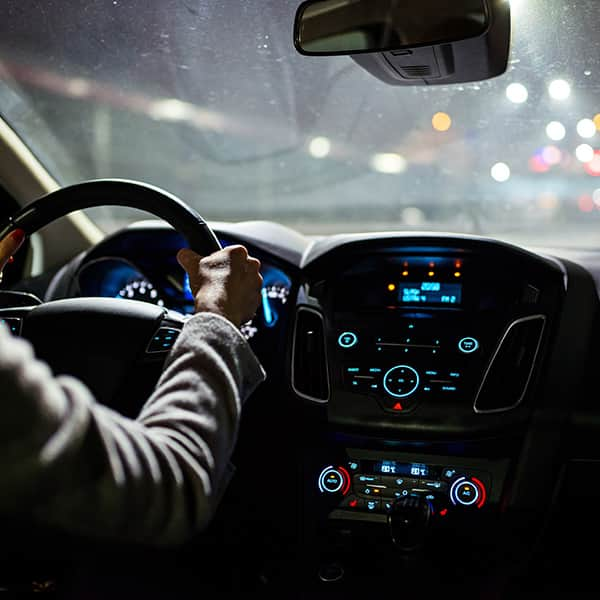
If you find driving after dark a little daunting, you're certainly not alone. Night driving is considerably more challenging and nearly half of all accidents occur at night — even though most driving actually takes place during the day.
At night, our eyes experience decreased depth perception, peripheral vision, color recognition, and focus. Add roaming wildlife and people heading home after a night at the bar and you've got a potentially dangerous situation on your hands.
Here are a few tips to make you feel more comfortable behind the wheel when the sun goes down and help you become a safer nighttime driver.
Keep Your Lights On at Sunset
There's a certain interval in the evening, when the sun is just beginning to set, that some drivers flip their headlights on and others leave them off. When in doubt, always put your lights on. Even if light level has decreased just a bit, it's still advisable good to err on the side of caution and drive with your headlights on. And in some areas, it's actually the law.
Stay Awake, Sober, and Alert
At night, more drivers are sleepy behind the wheel or potentially driving while intoxicated. Now more than ever, it's important to always remain alert, drive defensively, and watch out for the "other guy." Make sure you're fully alert, and under no circumstance drive after drinking.
Don't Speed
Although traveling above the speed limit is never a good idea (for both safety and ticketing reasons), it's especially dangerous at night. Reduce your speed at night to increase your reaction time for wildlife, pedestrians, or debris that may appear on the road. When limited illumination makes it more difficult to see upcoming road conditions, be sure to slow down in order to prepare for whatever could come your way.
Dim Your Instrument Panel
Most cars' dashboards come with dimmer switches, and if yours does, you should definitely consider using it. When your interior lights are dimmer, your eyes will be less sensitive to bright exterior lights coming towards you.
Keep Your Headlights, Mirrors, and Windows Clean
Driving at night becomes even more challenging if your headlights, mirrors, and windows are dirty or damaged. Keep these parts in good condition and replace burnt-out headlights as soon as you notice them. Have dried out old blades? Make sure that your windshield wipers are in full working order in case conditions become rainy, snowy, or foggy.
Glance to the Side of the Road
Everyone gets into this situation at least occasionally: there's a driver coming towards you with his high beams on and you're blinded, squinting just to see the road. Inevitably, this will happen as drivers don't always remember to switch back to their low beams when approaching traffic — although you should!
To counteract this blinding oversight, avoid looking directly into headlights – glance to the right side of your lane instead. You'll still need to keep your peripheral vision alert to warn you about potential hazards. If the car following you is using high beams, adjust your rearview mirror to make the lights behind you appear dimmer.

